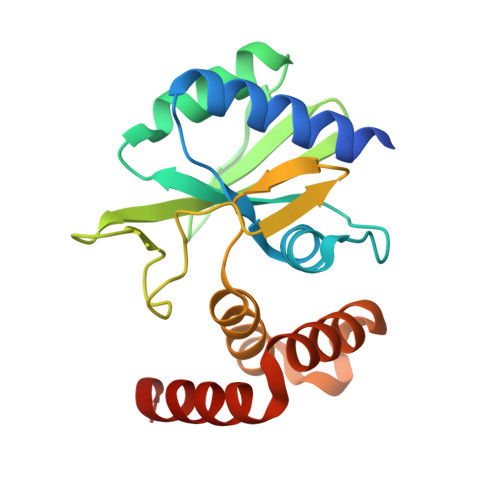Revisiting the Catalytic Cycle and Kinetic Mechanism of AminoglycosideO-Nucleotidyltransferase(2¡ä¡ä): A Structural and Kinetic Study.
Bassenden, A.V., Park, J., Rodionov, D., Berghuis, A.M.(2020) ACS Chem Biol
- PubMed: 32100995
- DOI: https://doi.org/10.1021/acschembio.9b00904
- Primary Citation of Related Structures:
4XJE, 5CFU - PubMed Abstract:
Aminoglycoside antibiotics have lost much of their effectiveness due to widespread resistance, primarily via covalent modification. One of the most ubiquitous enzymes responsible for aminoglycoside resistance is aminoglycoside O -nucleotidyltransferase(2¡å), which catalyzes a nucleotidylation reaction. Due to its clinical importance, much research has focused on dissecting the mechanism of action, some of it dating back more than 30 years. Here, we present structural data for catalytically informative states of the enzyme, i.e., ANT(2¡å) in complex with adenosine monophosphate (AMP) and tobramycin (inactive-intermediate state) and in complex with adenylyl-2¡å-tobramycin, pyrophosphate, and Mn 2+ (product-bound state). These two structures in conjunction with our previously reported structure of ANT(2¡å)'s substrate-bound complex capture clinical states along ANT(2¡å)'s reaction coordinate. Additionally, isothermal titration calorimetry (ITC)-based studies are presented that assess the order of substrate binding and product release. Combined, these results outline a kinetic mechanism for ANT(2¡å) that contradicts what has been previously reported. Specifically, we show that the release of adenylated aminoglycoside precedes pyrophosphate. Furthermore, the ternary complex structures provide additional details on the catalytic mechanism, which reveals extensive similarities to the evolutionarily related DNA polymerase-¦Â superfamily.
Organizational Affiliation:
Department of Biochemistry, McGill University, McIntyre Medical Building, 3655 Promenade Sir William Osler, Montr¨¦al, Qu¨¦bec Canada, H3G 1Y6.




















